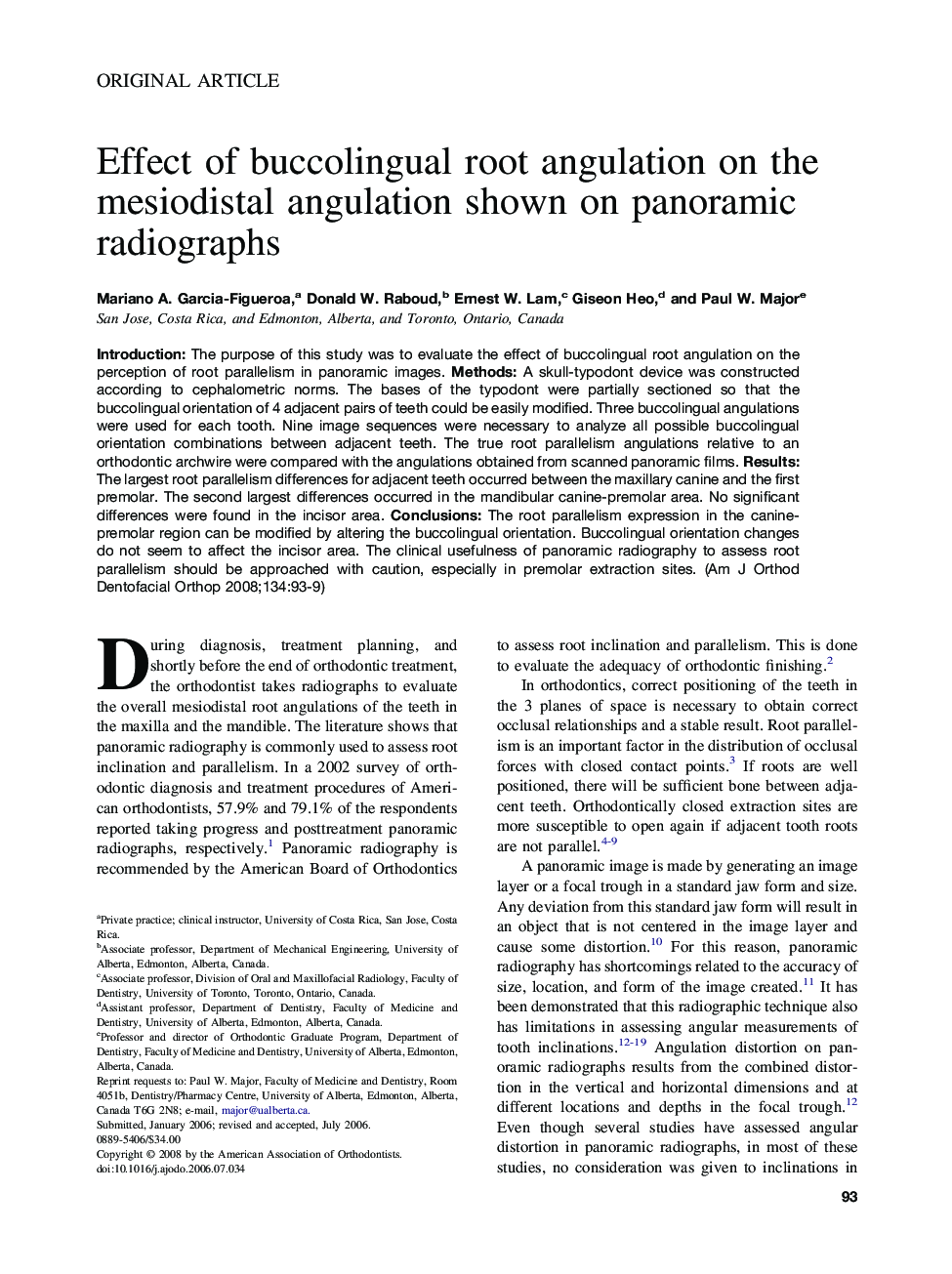| Article ID | Journal | Published Year | Pages | File Type |
|---|---|---|---|---|
| 3118891 | American Journal of Orthodontics and Dentofacial Orthopedics | 2008 | 7 Pages |
Introduction: The purpose of this study was to evaluate the effect of buccolingual root angulation on the perception of root parallelism in panoramic images. Methods: A skull-typodont device was constructed according to cephalometric norms. The bases of the typodont were partially sectioned so that the buccolingual orientation of 4 adjacent pairs of teeth could be easily modified. Three buccolingual angulations were used for each tooth. Nine image sequences were necessary to analyze all possible buccolingual orientation combinations between adjacent teeth. The true root parallelism angulations relative to an orthodontic archwire were compared with the angulations obtained from scanned panoramic films. Results: The largest root parallelism differences for adjacent teeth occurred between the maxillary canine and the first premolar. The second largest differences occurred in the mandibular canine-premolar area. No significant differences were found in the incisor area. Conclusions: The root parallelism expression in the canine-premolar region can be modified by altering the buccolingual orientation. Buccolingual orientation changes do not seem to affect the incisor area. The clinical usefulness of panoramic radiography to assess root parallelism should be approached with caution, especially in premolar extraction sites.
